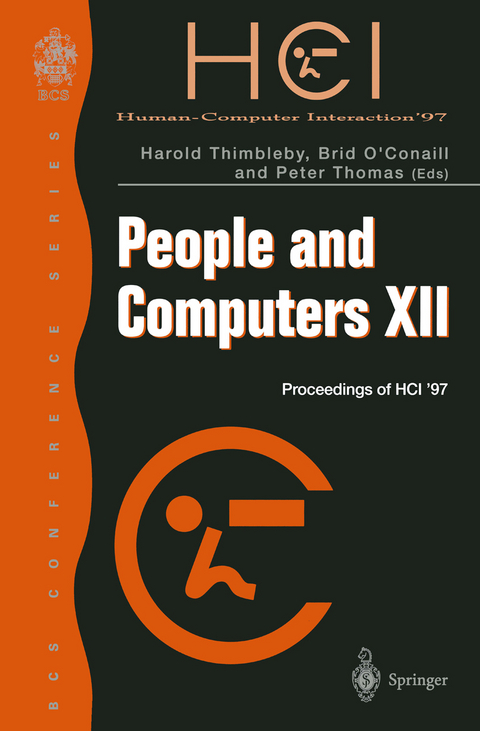
People and Computers XII
Springer Berlin (Verlag)
978-3-540-76172-3 (ISBN)
Making Passwords Secure and Usable.- Strategies for Organising Email.- Navigating Telephone-Based Interfaces with Earcons.- Do Users Always Benefit When User Interfaces Are Consistent?.- Conceptual Design Reconsidered: The Case of the Internet Session Directory Tool.- Computer Anxiety and the Human-Computer Interface.- Towards a Situated Action Calculus for Modelling Interactions.- Explorations in Sonic Browsing.- Remote Homeplace Communication: What is It Like and How Might We Support It?.- A Making-Movies Metaphor for Structuring Software Components in Highly Interactive Applications.- The Impact of Time and Place on the Operation of Mobile Computing Devices.- The Impact of Marginal Utility and Time on Distributed Information Retrieval.- Computer-Assisted Remote Control for the User with Motor Impairment.- Research and the Design of Human-Computer Interactions or 'What Happened to Validation?'.- Using Diagrams to Support the Analysis of System 'Failure' and Operator 'Error'.- The Interactional Affordances of Technology: An Ethnography of Human-Computer Interaction in an Ambulance Control Centre.- Why, What, Where, When: Architectures for Cooperative work on the World Wide Web.- BUILD-IT: A Computer Vision-based Interaction Technique for a Planning Tool.- Formally Comparing and Informing Notation Design.- Direct Object Manipulation vs Direct Concept Manipulation: Effect of Interface Style on Reflection and Domain Learning.- HyperAT: HCI and Web Authoring.- Separating User Knowledge of Domain and Device: A Framework.- Eliciting Information Portrayal Requirements: Experiences with the Critical Decision Method.- Author Index.- Keyword Index.
| Erscheint lt. Verlag | 15.8.1997 |
|---|---|
| Zusatzinfo | XI, 420 p. 51 illus. |
| Verlagsort | London |
| Sprache | englisch |
| Maße | 155 x 235 mm |
| Gewicht | 664 g |
| Themenwelt | Mathematik / Informatik ► Informatik ► Betriebssysteme / Server |
| Mathematik / Informatik ► Informatik ► Datenbanken | |
| Informatik ► Software Entwicklung ► User Interfaces (HCI) | |
| Mathematik / Informatik ► Informatik ► Web / Internet | |
| Schlagworte | Architectures • Calc • Calculus • convergence • Design • ethnography • Field • Human-Computer Interaction (HCI) • Human Factors • Information • interfaces • Internet • Software • Tool • user interface |
| ISBN-10 | 3-540-76172-1 / 3540761721 |
| ISBN-13 | 978-3-540-76172-3 / 9783540761723 |
| Zustand | Neuware |
| Haben Sie eine Frage zum Produkt? |
aus dem Bereich


